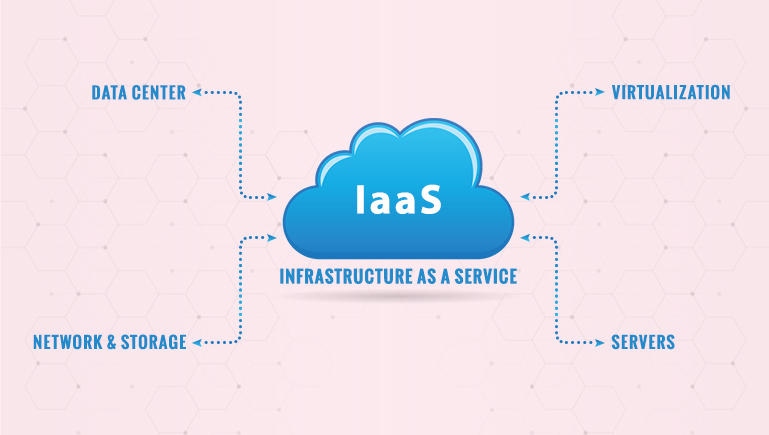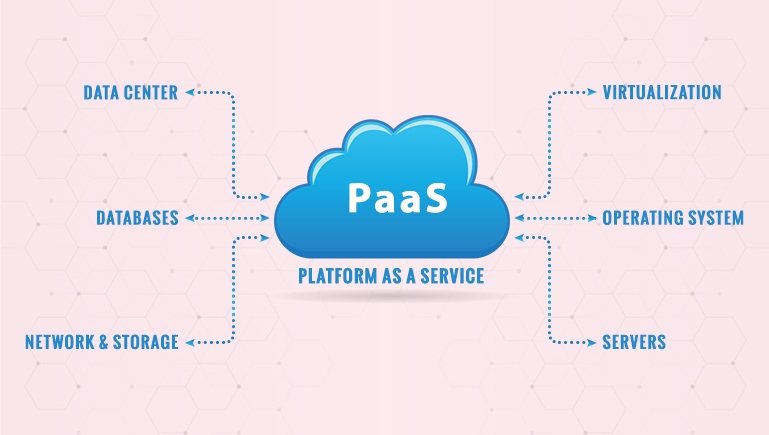Cloud computing services help companies deliver an exceptional customer experience.
Cloud computing encompasses robust computing power and a large infrastructure that helps businesses deliver an exceptional customer experience.

This customer service not only meets different customer requirements, but also improves the business landscape.
When it comes to migrating your business to the cloud, you need to become familiar with the three main types of cloud computing: IaaS (Infrastructure as a Service), PaaS (Platform as a Service), and SaaS (Software as a Service) various cloud computing services will help you find the right technology for a business.
Cloud, you need to know the advantages and differences of the different cloud services and in this blog we are going to talk about the main differences between these three cloud computing models (IaaS, PaaS and SaaS).
IaaS (Infrastructure as a Service)
This cloud computing service helps companies to provide resources via the cloud or virtually. Operating systems and networks without buying hardware. Instead, IaaS customers can use an API or dashboard to access and manage their resources.

IaaS Deployment
IaaS products provide cloud computing infrastructure such as storage, operating systems, and virtual networks.
This platform helps developers manage hard drives, servers, and storage, as well as virtualization and network.
IaaS capabilities
The capabilities that define IaaS as a cloud computing service are as follows:
-
- IaaS platforms and its services are flexible, scalable, and dynamic.
- Companies get full control of the infrastructure.
- Costs vary depending on usage.
- Multiple users can access some of the hardware.
- IaaS services are affordable.
Benefits of IaaS has many advantages:
- The most flexible cloud service model.
- You don’t have to buy or buy a physical server.
- You can scale it up or down as needed.
- Your PAYG model (PayAsYouGo) supports companies only.
- Pay for the necessary resources.
Easy automation of the distribution of storage, servers, networks and processes Development performance.
Disadvantages of IaaS
- Although the customers full control over operating systems, applications, Middle-ware and data are preserved, risks can arise on virtual machines or hosts.
- The infrastructure may be inadequate to provide adequate controls to protect such applications.
- The workforce may need more training and resources to learn how to efficiently manage the infrastructure.
- Security concerns may arise due to the multi-tenant infrastructure.
- You have to rely on the internet connection. since it is the only way to access the infrastructure.
Popular IaaS examples
DigitalOcean
Microsoft Azure
IBM Cloud
AWS (Amazon Web Services)
Google Cloud
PaaS (Platform as a Service)
This cloud service model works on a different level. For certain reasons, the PaaS platform provides a framework for customers to create their own.

In addition, this platform deals with cloud-related operations such as offering virtualization, managing operating systems, maintaining storage units, maintaining servers and managing networks.
PaaS Deployment
PaaS provides a secure, turnkey, cloud-based platform for developing or hosting software on the web. It serves as the basis for SaaS.
This platform helps developers to concentrate freely on creating software without having to worry about infrastructure, storage, software updates or operations.
Characteristics of PaaS
- It combines databases and web services.
- It was developed in virtualization technology, so resources can easily be scaled up or down according to changes.
- In your business, available to many users through a similar system.
- Application Development Provides a variety of services to assist with application development, testing, and deployment.
Advantages of PaaS
- PaaS enables easy collaboration for the entire team.
- It is affordable.
- Developers can build an application directly on the platform and deploy it immediately.
- This platform is highly scalable and flexible.
- Applications can be customized and updated on the PaaS platform.
Disadvantages of PaaS
- A third party is processing your data. Therefore, security risks can arise.
- Cloud to another. If some elements are outside of the cloud, potential compatibility issues can arise.
- You may not optimize PaaS solutions for your preferred frameworks & language.
- When certain projects are not in the cloud, potential compatibility issues may arise.
- PaaS solutions may not be optimized for your preferred platform and language.
- PaaS cannot be a plug-and-play solution for modern legacy applications and services.
Examples of follows:
AWS Elastic Beanstalk
Red Hat OpenShift
Google App Engine
Windows Azure
Apprenda
SaaS (Software As A Service)
SaaS is a virtualized and readily available environment with a flexible and attractive user interface.
In addition, every SaaS software solution contains content that all users delivered via the Internet can access through a browser.

SaaS Delivery
SaaS provision SaaS is provided through the Internet. With SaaS, you don’t need IT staff to download and install applications on every computer. With SaaS, providers can manage various technical risks, such as servers, data, middleware, and storage, so as to provide companies with organized support and maintenance.
SaaS functions
The most important functions of the SaaS platform are:
- Provide the Internet.
- An all-encompassing cloud service model that provides compliance, security and services at a certain price.
- High scalability, suitable for stratification of small and medium-sized enterprises.
- External vendors provide its advantages.
The main advantages of SaaS are:
- Easy to set up and use.
- Cloud and easy access to the Internet.
- No need to use local resources.
- No need to update or manage.
- SaaS applications.
- Simple SaaS to purchase and find products SaaS.
Disadvantages of SaaS some are as following:
- SaaS, you cannot control the operation of SaaS.
- The cloud infrastructure of the product.
- SaaS tools may not be compatible with other tools and equipment used by your company.
- If there is a risk, your entire company and your data may be destroyed.
- Complexity can limit the use of SaaS products or other related services.
SaaS Popular Examples
DropBox
HubSpot
Salesforce
GoToMeeting
Google Workplace
IaaS vs. PaaS vs. SaaS: Main differences
Each cloud service model is different and has some advantages and disadvantages that are different from other models.
To understand and choose the right platform for your company, let’s start with the difference between IaaS and PaaS!
IaaS vs PaaS
The main difference between IaaS and PaaS is that IaaS applications are cloud-based, while PaaS solutions are cloud-enabled.
Anywhere on any platform with high scalability. On the other hand, with IaaS, applications are first created in the cloud, and you can take full advantage of cloud capabilities. Any additional input from the developer.
PaaS vs SaaS
The SaaS provider handles everything internally. On the other hand, PaaS also allows developers to create their own systems, which provides them with considerable flexibility.
However, PaaS requires features that today’s digital customers require, such as scalability, customization, and ease of use.
SaaS vs IaaS
SaaS and IaaS standard applications run directly through an online browser, without the involvement of developers. Suitable for all business environments.
On the other hand, IaaS allows users to access application management and operating parameters. For this reason, users prefer IaaS solutions to SaaS.
Conclusion
Each cloud computing solution has its own advantages and disadvantages, functions and characteristics. Each cloud service model contains some extraordinary features. Therefore, choose the most suitable one to improve your business.
When choosing a cloud computing solution, please consider your business goals and easily meet user needs by expanding your cloud infrastructure. IaaS, PaaS and SaaS three cloud services can improve the efficiency and productivity of your business, and help you continue to grow.
